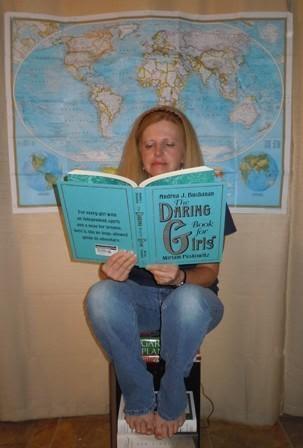Cheryl Hughes: Human Chain
Did you see the story in the news last week, about the family who got caught in the rip current off the coast of a U.S. beach? (I think it was a mom and her two kids.) A quick-thinking guy rounded up people on the beach, who formed a human chain, in order to reach the family and pull them to safety. It was inspiring.
I was reminded of a similar story that didn’t end as well. It happened during the hurricane of 1900 that hit Galveston, Texas. There was an orphanage in the town, St. Mary’s Orphan Asylum. It housed 93 children and 10 nuns. Most of the children had lost their parents due to a yellow fever epidemic that hit the area a few years earlier.
When the storm started to come ashore—winds were estimated at 150 mph—the nuns tied themselves to the children with clothesline. Each nun had six to eight children in her care. Three boys, who decided they would take their chances on their own, headed for the roof. The nuns and the rest of the children moved up to the second floor of the building in order to escape the water that was flooding the first floor.
As the sea became more violent, the waves hurled a ship into the orphanage, causing the building to be knocked from its foundation. As a result, the roof collapsed on everyone inside. The only survivors were the three boys who had headed for the roof. They were found a day later, clinging to an uprooted tree, floating offshore.
The boys told how the nuns had tried to comfort the children in the last hours of their lives by singing “Queen of the Waves,” a song sung by sailors during storms at sea. The nuns were found still tethered to the children in their care. One of the boys had witnessed a nun telling two small children, “I will never let go.” She was found with both children “still firmly grasped within her arms.” (newspapers.com/Galveston Daily News/ 9 September, 1994.)
That story has haunted me since the day I read it, years ago. I’ve mulled it over in my mind, thinking about how things might have been different if the nuns hadn’t tied the children to themselves. It’s hard to know if anything would have changed. It was estimated between six to eight thousand people died in Galveston that day in 1900. (TSHA.org.) Maybe, they would have all perished, anyway. One thing I do know. Those children didn’t die alone. Those ten women held onto them with their own dying breaths. And who among us could have done better?
Every day, there are those of us who are part of a human chain, striving to save someone we love who is going under emotionally or mentally or physically. Sometimes, all we can do is hold on with everything we’ve got and remind that person we will not let go. Once in a while, someone on the shore will link arms with us and help us pull the drowning person to safety, but there will be times when we will feel we are going under ourselves.
I think often of what Mother Theresa said to a young nun who was distraught at the prospect of holding a dying baby in her arms. “What can I do?” she cried.
“You can make sure this baby knows it’s loved before it leaves this world,” she said.
Who among us can do better than that?
- Log in to post comments



























